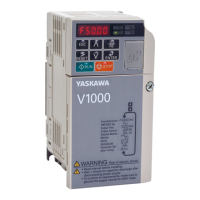2.8.23.11 Exercises of Macro Programs (Cent’d)
T:
s:
T:
s:
T:
s:
That looks OK.
**********
I think something is wrong. With this pro-
gram, I have to specify points W and F
every time !
That’s true.
With a usual canned cycle,
when points W and F have been specified
once, their values are retained. Thereafter,
only U is specified.
Do you have any trick to overcome this in–
convenience ?
I do.
In such a case,
common variables
(#100 - #549) help.
Using common variables,
write the macro to designate the position of
points W and F.
I’ve got it! Now, I divide the macro body
into ;WO parts as follows:
(P8)
09000 ;
#100 = #23 ;
#lol = #9 ;
M99 ;
(P9)
09093 ;
GOO U#21 ;
G32 w#100 F#lOl ;
GOO U-#21 ;
GOO w-#100 ;
M99 ;
and I write the macro call as follows:
(Plo)
G65 P9000 w-60. F6. O ;
G65 P9093 u-50. ;
G65 P9093 u-51.4 ;
G65 P9093 u-52.6 ;
G65 P9093 U. . . ;
T :
Very good.
s:
T:
s:
**********
I’d like to try to program Rapid threading
pull-out .
OK.
How
about designating the width of
rapid threading pull–out using address K ?
AH right. Let’s see . . . . .
Macro call is as follows:
G65 P9000 w-60. K4.8 F6. O ;
G65 P9093 u-50. ;
G65 P9093 u-51.4 ;
G65P9093 U- . . . ;
Macro body is as follows:
09000 ;
#100 = #23 ;
#lol = #9 ;
#102 = ABS [ #61;
M99 ;
09093 ;
#10 = ROUND [ #1021 *2 ;
#11 = ROUND [ #211 + #10 ;
#12 = ROUND [ #1001 + ROUND [#102] ;
GOOO U#21 ;
G32 W#12 F#lOl ;
G32 U#10 W-#102 ;—RAPID THREADING
GOO U-#11 ;
PULL-OUT
GOO w-#100 ;
M99
Is this OK?
90

